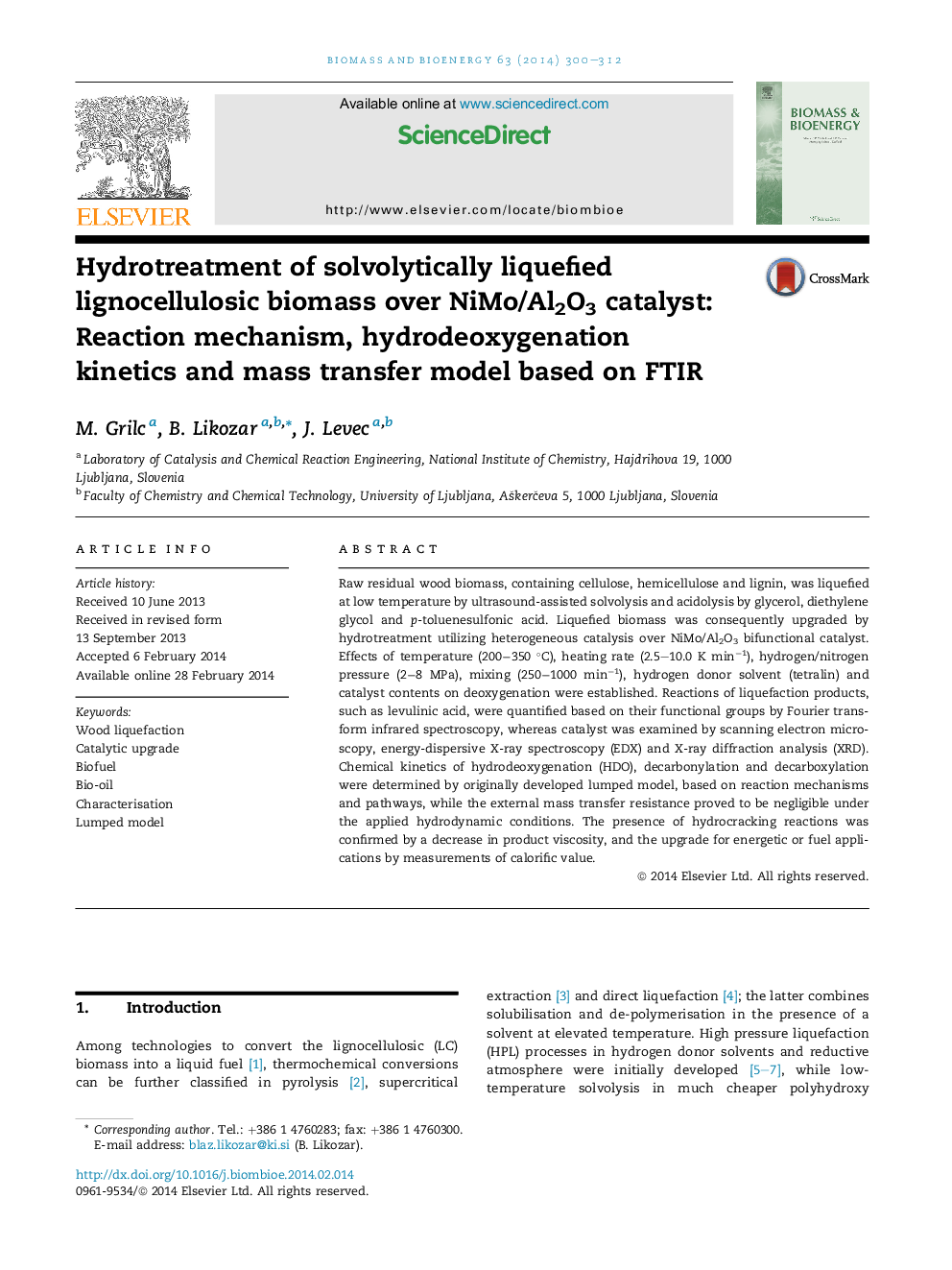| کد مقاله | کد نشریه | سال انتشار | مقاله انگلیسی | نسخه تمام متن |
|---|---|---|---|---|
| 676936 | 1459830 | 2014 | 13 صفحه PDF | دانلود رایگان |

• Liquefaction of waste lignocellulosic biomass with glycerol at low temperature.
• Hydrotreatment, hydrocracking and hydrodeoxygenation of liquefied waste biomass.
• Deoxygenation using heterogeneous catalysis over NiMo/Al2O3 bifunctional catalyst.
• Proposal of reaction mechanism; chemical kinetics and mass transfer considerations.
• Effect of temperature, heating rate, pressure, mixing, solvent and catalyst content.
Raw residual wood biomass, containing cellulose, hemicellulose and lignin, was liquefied at low temperature by ultrasound-assisted solvolysis and acidolysis by glycerol, diethylene glycol and p-toluenesulfonic acid. Liquefied biomass was consequently upgraded by hydrotreatment utilizing heterogeneous catalysis over NiMo/Al2O3 bifunctional catalyst. Effects of temperature (200−350 °C), heating rate (2.5–10.0 K min−1), hydrogen/nitrogen pressure (2−8 MPa), mixing (250−1000 min−1), hydrogen donor solvent (tetralin) and catalyst contents on deoxygenation were established. Reactions of liquefaction products, such as levulinic acid, were quantified based on their functional groups by Fourier transform infrared spectroscopy, whereas catalyst was examined by scanning electron microscopy, energy-dispersive X-ray spectroscopy (EDX) and X-ray diffraction analysis (XRD). Chemical kinetics of hydrodeoxygenation (HDO), decarbonylation and decarboxylation were determined by originally developed lumped model, based on reaction mechanisms and pathways, while the external mass transfer resistance proved to be negligible under the applied hydrodynamic conditions. The presence of hydrocracking reactions was confirmed by a decrease in product viscosity, and the upgrade for energetic or fuel applications by measurements of calorific value.
Figure optionsDownload as PowerPoint slide
Journal: Biomass and Bioenergy - Volume 63, April 2014, Pages 300–312